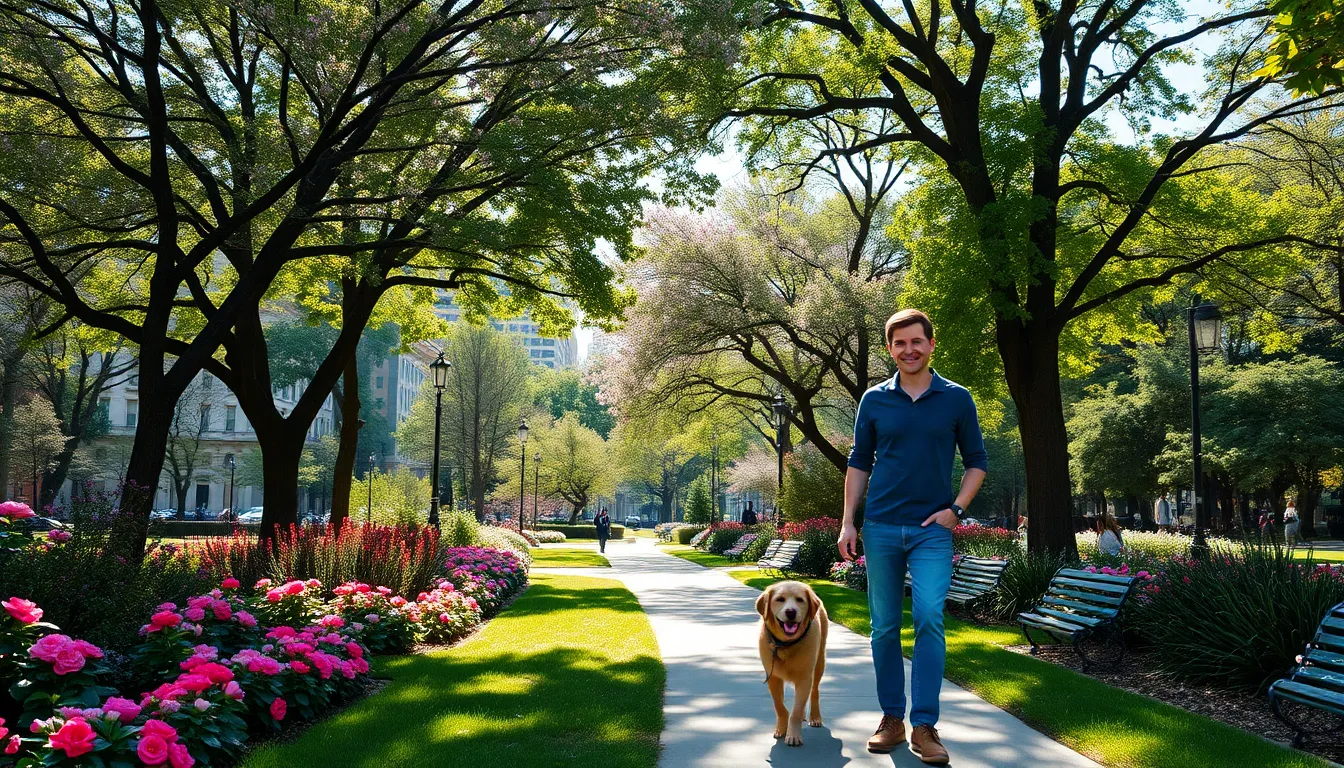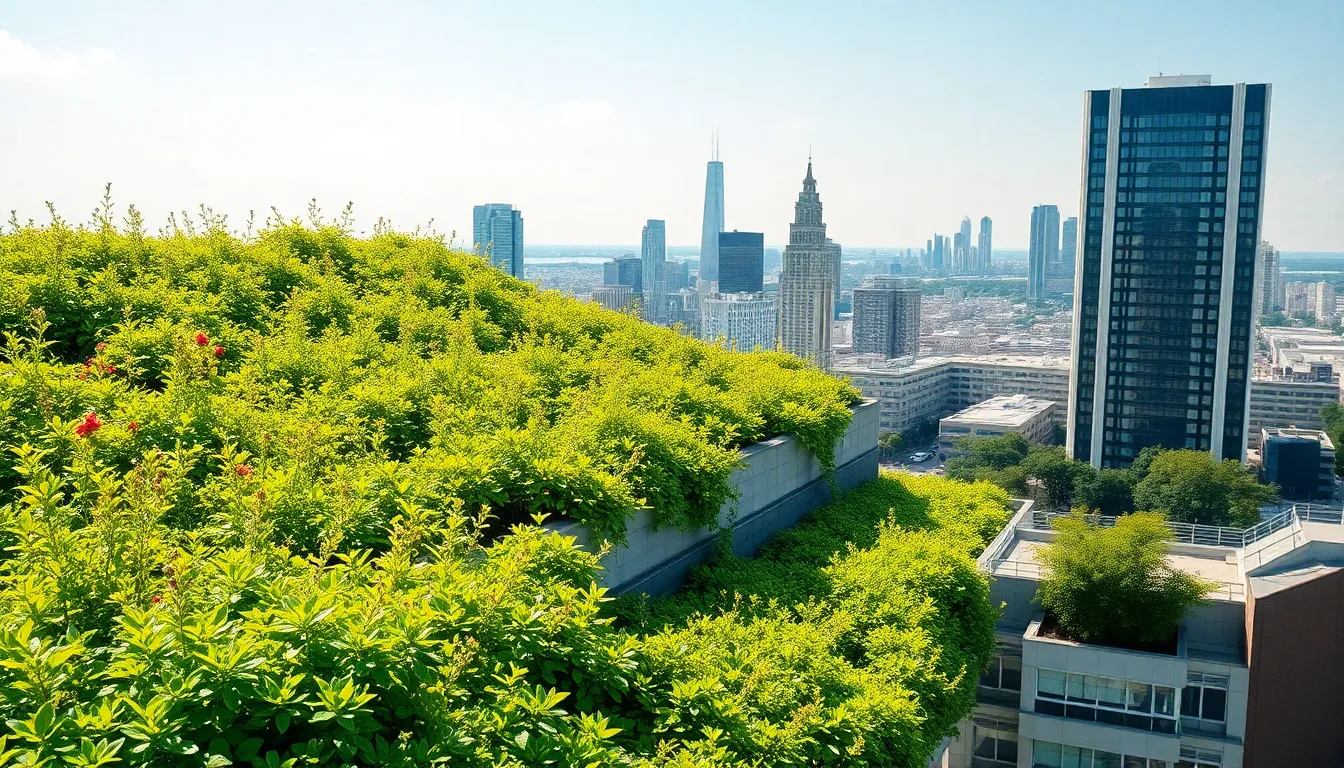In an era where environmental challenges loom large, eco-infrastructure emerges as a beacon of hope for sustainable development. This innovative approach integrates natural systems into urban planning, creating spaces that not only support human activity but also enhance biodiversity and ecosystem health. By prioritizing green solutions, cities can reduce their ecological footprint while improving residents’ quality of life.
Eco-infrastructure encompasses a wide range of practices, from green roofs and permeable pavements to urban forests and wetlands. These elements work together to manage stormwater, improve air quality, and provide recreational opportunities. As communities increasingly recognize the importance of harmonizing built environments with nature, eco-infrastructure stands at the forefront of a transformative movement toward resilient and sustainable urban living.
Table of Contents
ToggleWhat Is Eco-Infrastructure?
Eco-infrastructure refers to the integration of natural systems and processes into urban environments, providing multiple environmental, social, and economic benefits. This approach emphasizes working with nature to create sustainable solutions for urban challenges. It encompasses various elements designed to enhance ecological resilience, promote biodiversity, and improve quality of life for residents.
Key components of eco-infrastructure include:
- Green Roofs: These are vegetated surfaces installed on buildings. Green roofs improve insulation, manage stormwater, and enhance urban biodiversity.
- Permeable Pavements: Designed to allow water infiltration, permeable pavements minimize runoff and reduce flooding. They recharge groundwater while providing durable walking and driving surfaces.
- Urban Forests: Comprising trees and vegetation in cities, urban forests capture carbon, improve air quality, and provide habitat for wildlife. They also offer recreational spaces for communities.
- Wetlands: These natural water habitats serve as effective filtration systems. Wetlands manage stormwater, reduce pollution, and improve water quality in urban areas.
Eco-infrastructure aligns urban planning with nature, fostering resilience against climate change and promoting sustainable development. Incorporating these practices leads to healthier environments and communities, enhancing overall livability.
Importance of Eco-Infrastructure

Eco-infrastructure plays a critical role in fostering sustainable urban development by enhancing both environmental quality and community resilience. Its integration into urban planning delivers substantial environmental and economic benefits.
Environmental Benefits
Environmental benefits of eco-infrastructure include improved biodiversity, enhanced air and water quality, and effective climate change mitigation.
- Biodiversity Enhancement: Eco-infrastructure supports various species by creating habitats that facilitate wildlife movement and nesting. Urban forests and green roofs provide essential habitats for birds, insects, and native plants.
- Air Quality Improvement: Vegetation, such as trees and green walls, absorbs pollutants, reduces particulate matter, and increases oxygen production, contributing to healthier air quality in urban areas.
- Stormwater Management: Techniques like permeable pavements and bioswales capture and filter rainwater, reducing runoff and preventing urban flooding while replenishing groundwater supplies.
- Carbon Sequestration: Urban forests and green roofs absorb carbon dioxide, mitigating the impact of greenhouse gases and contributing toward climate goals.
Economic Advantages
Economic advantages of eco-infrastructure manifest through cost savings, increased property values, and enhanced urban aesthetics.
- Cost Savings: Implementing eco-infrastructure reduces long-term infrastructure costs by mitigating stormwater management expenses and decreasing energy consumption. Green roofs lower heating and cooling costs by providing natural insulation.
- Increased Property Values: Properties located near green spaces and parks enjoy higher market values. The aesthetic appeal and health benefits associated with eco-infrastructure attract potential buyers and tenants.
- Job Creation: The development and maintenance of eco-infrastructure create job opportunities in landscaping, horticulture, and urban planning, contributing to local economies.
- Tourism and Revenue Generation: Green spaces and urban parks can attract tourists, boosting local businesses and generating revenue for communities. The presence of eco-infrastructure enhances the overall attractiveness of urban areas.
Integrating eco-infrastructure represents a strategic approach to address urban challenges while promoting ecological integrity and economic viability.
Types of Eco-Infrastructure
Eco-infrastructure systems include various practices that harness natural processes to address urban challenges effectively. The following types represent significant components of eco-infrastructure.
Green Roofs
Green roofs consist of vegetation planted on rooftops, offering numerous benefits. They enhance insulation, which lowers energy costs for heating and cooling. Green roofs also manage stormwater by absorbing rainfall, reducing runoff by up to 65% during peak storms. Additionally, vegetation helps improve air quality by filtering pollutants and capturing carbon, contributing to urban biodiversity.
Urban Forests
Urban forests play a critical role in enhancing city environments. They provide shade and cooling, reducing the urban heat island effect by as much as 5°F. Urban forests improve air quality, absorbing carbon dioxide and releasing oxygen, and support wildlife habitats. Incorporating trees and green spaces improves residents’ mental well-being, making urban areas more livable and resilient.
Wetlands Restoration
Wetlands restoration focuses on rehabilitating natural wetland areas for ecological benefits. These ecosystems serve as effective filters, removing pollutants from water and improving overall water quality. Restored wetlands also manage flooding by absorbing excess water, reducing flood risks for urban areas. Furthermore, they provide crucial habitats for diverse wildlife, supporting various plant and animal species.
Challenges in Implementing Eco-Infrastructure
Implementing eco-infrastructure presents various challenges that must be addressed for effective integration into urban environments. Key obstacles include funding, investment, policy, and regulation.
Funding and Investment
Securing funding for eco-infrastructure projects poses a significant hurdle. Many municipalities face budget constraints, making it difficult to allocate resources for green initiatives. Identifying diverse funding sources, such as grants, public-private partnerships, and environmental credits, becomes essential for project initiation and sustainability. For instance, cities employing public-private partnerships can leverage private investments to enhance green projects while sharing associated costs and benefits. Additionally, financial incentives for eco-infrastructure can motivate stakeholders to support sustainable investments, leading to successful project implementation.
Policy and Regulation
Navigating existing policies and regulations complicates the implementation of eco-infrastructure. Many municipalities operate under outdated zoning laws that may not accommodate new sustainable practices. Reforming these regulations can foster a more supportive environment for eco-infrastructure. Integrating eco-infrastructure into local planning and decision-making processes requires collaboration among government agencies, planners, and communities. Establishing clear guidelines and standards helps streamline project approvals and promotes the adoption of eco-friendly solutions. Furthermore, engaging stakeholders in policy advocacy can lead to more innovative regulatory frameworks that encourage sustainable urban development.
Case Studies of Successful Eco-Infrastructure Projects
Numerous cities showcase the successful implementation of eco-infrastructure projects, making significant strides in sustainability and resilience.
New York City, USA
New York City implemented the Green Roofs Initiative, transforming underutilized rooftops into green spaces. Over 500,000 square feet of green roofs contribute to stormwater management, improved air quality, and increased energy efficiency. The initiative augmented biodiversity by providing habitats for various species of birds and insects.
Singapore
Singapore’s Gardens by the Bay represents an innovative urban park combining nature with technology. This project integrates vertical gardens, solar panels, and water management systems. The gardens capture rainwater, support a myriad of plant species, and bolster urban cooling. The success of this project demonstrates eco-infrastructure’s capacity to create vibrant community spaces while enhancing urban ecosystems.
Copenhagen, Denmark
Copenhagen launched the Cloudburst Management Plan to address flooding caused by heavy rainfall. This plan incorporates green roofs, permeable pavements, and strategically designed parks to absorb excess stormwater. The project’s effectiveness reduces flooding risks and revives local biodiversity, aligning urban development with ecological principles.
San Francisco, USA
San Francisco’s Urban Forest Plan aims to increase tree canopy coverage by 25% by 2035. The initiative focuses on planting diverse tree species throughout the city, enhancing air quality, reducing urban heat, and improving residents’ well-being. The plan’s comprehensive approach demonstrates eco-infrastructure’s role in fostering vibrant, livable urban environments.
Melbourne, Australia
Melbourne has implemented the Urban Forest Strategy to expand its tree canopy and increase green space accessibility. Efforts include planting over 3,000 new trees per year, while enhancing biodiversity and reducing urban heat. This strategy highlights eco-infrastructure’s critical impact on urban climate resilience, promoting better quality of life for residents.
Toronto, Canada
Toronto’s Green Streets Program blends green infrastructure into streetscapes by incorporating rain gardens and permeable surfaces. This program manages stormwater runoff effectively while improving urban aesthetics. By revitalizing neighborhoods, this project embodies eco-infrastructure’s role in promoting environmental sustainability and community engagement.
These case studies illustrate eco-infrastructure’s transformative potential in urban settings, contributing to sustainability and enhancing residents’ quality of life.
Eco-infrastructure stands as a transformative approach to urban planning that aligns cities with natural systems. By integrating green roofs urban forests and wetlands into city landscapes it not only enhances biodiversity but also improves the quality of life for residents. As cities face increasing environmental challenges the need for sustainable solutions becomes more pressing.
The successful implementation of eco-infrastructure requires collaboration between government agencies communities and private sectors. Overcoming funding and regulatory hurdles is essential to realize its full potential. The positive impacts of eco-infrastructure extend beyond environmental benefits to include economic advantages such as increased property values and job creation.
Ultimately embracing eco-infrastructure paves the way for resilient urban environments that thrive in harmony with nature ensuring a healthier future for all.


